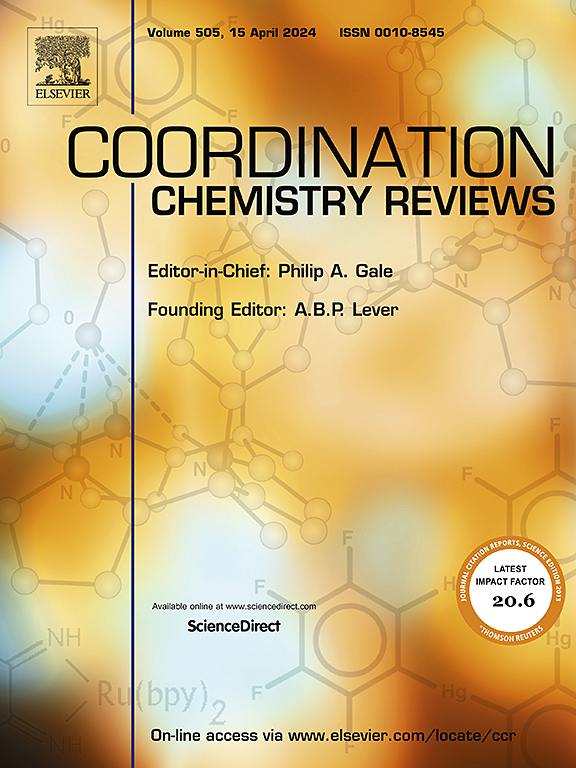Microenvironment engineering of MOFzymes for biomedical applications
IF 20.3
1区 化学
Q1 CHEMISTRY, INORGANIC & NUCLEAR
引用次数: 0
Abstract
Nanozymes, a type of nanomaterials with enzyme-like activity, have attracted growing attention in recent years due to their remarkable stability, tunable catalytic performance, multifunctionalities, and cost-effectiveness. Although significant progress has been made in the past decade, designing nanozymes with high selectivity, excellent catalytic activity, and new types of catalytic activities beyond oxidation-reduction reactions remains highly challenging. This is primarily due to the difficulties in fabricating well-defined nanozymes and precisely tailoring the microenvironment of catalytic sites at atomic level. Metal-organic frameworks (MOFs) with enzyme-mimicking activities (MOFzymes) offer several advantages over other nanozymes, including well-defined molecular structure and catalytic sites, high porosity, and large surface areas. MOFzymes mainly mimic various oxidoreductases, such as oxidase, peroxidase, catalase, superoxide dismutase, and glutathione peroxidase, making them suitable for various biomedical applications. In this article, the structures and properties of MOFzymes and the latest developments are thoroughly discussed. We particularly focus on the physical and chemical methods for microenvironment regulation of MOFzymes, and the working mechanisms. Furthermore, the applications of MOFzymes for biosensing, cancer therapy, antibacterial therapy, and anti-inflammatory therapy are described. Finally, we discuss the future opportunities and challenges of MOFzymes.
求助全文
约1分钟内获得全文
求助全文
来源期刊

Coordination Chemistry Reviews
化学-无机化学与核化学
CiteScore
34.30
自引率
5.30%
发文量
457
审稿时长
54 days
期刊介绍:
Coordination Chemistry Reviews offers rapid publication of review articles on current and significant topics in coordination chemistry, encompassing organometallic, supramolecular, theoretical, and bioinorganic chemistry. It also covers catalysis, materials chemistry, and metal-organic frameworks from a coordination chemistry perspective. Reviews summarize recent developments or discuss specific techniques, welcoming contributions from both established and emerging researchers.
The journal releases special issues on timely subjects, including those featuring contributions from specific regions or conferences. Occasional full-length book articles are also featured. Additionally, special volumes cover annual reviews of main group chemistry, transition metal group chemistry, and organometallic chemistry. These comprehensive reviews are vital resources for those engaged in coordination chemistry, further establishing Coordination Chemistry Reviews as a hub for insightful surveys in inorganic and physical inorganic chemistry.
 求助内容:
求助内容: 应助结果提醒方式:
应助结果提醒方式:


